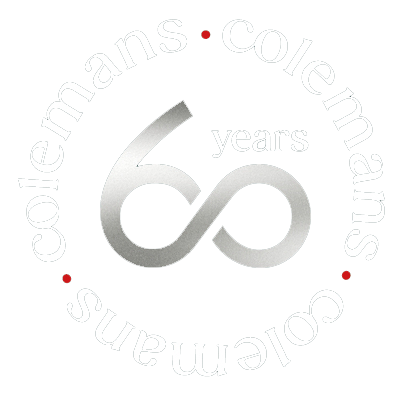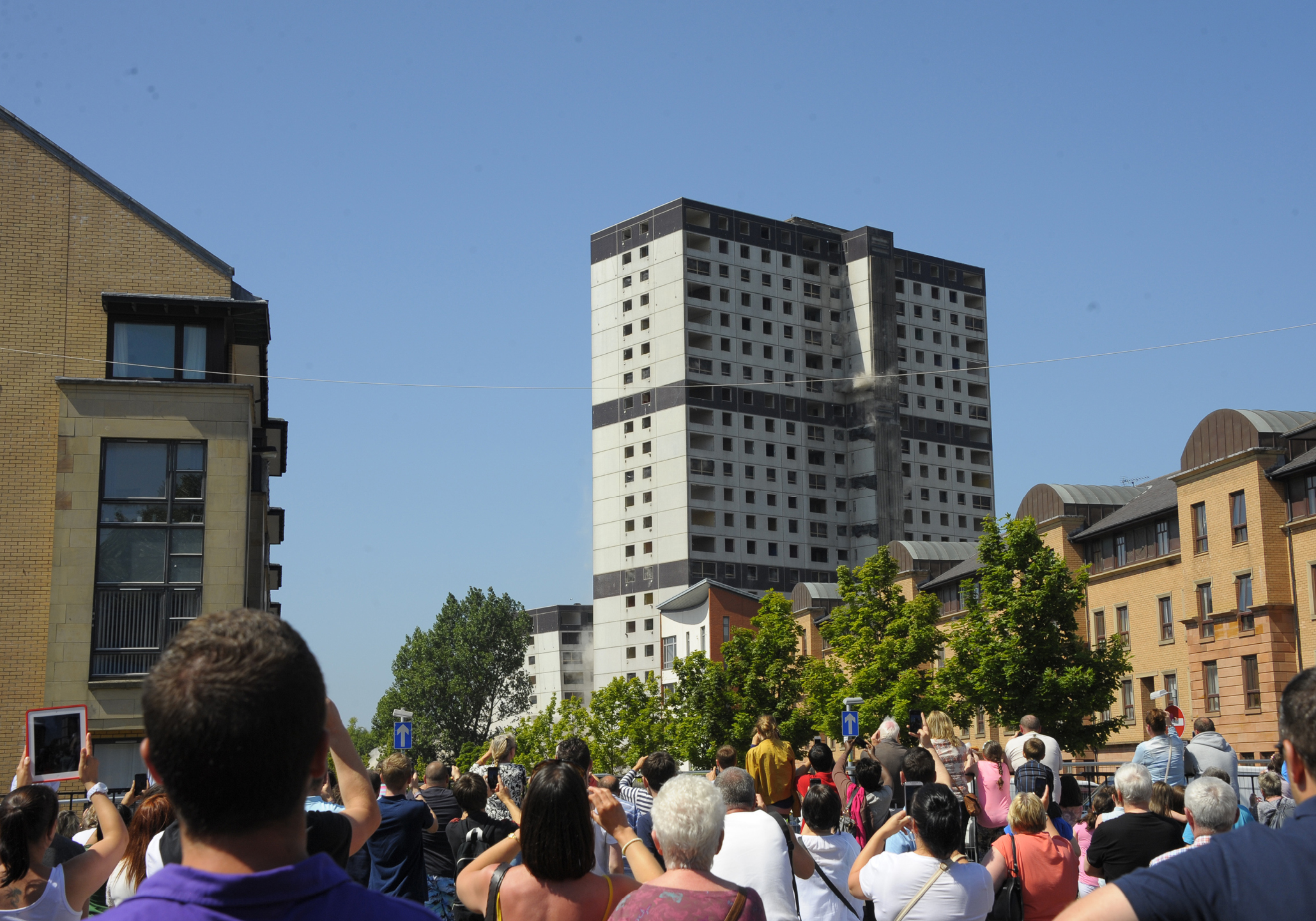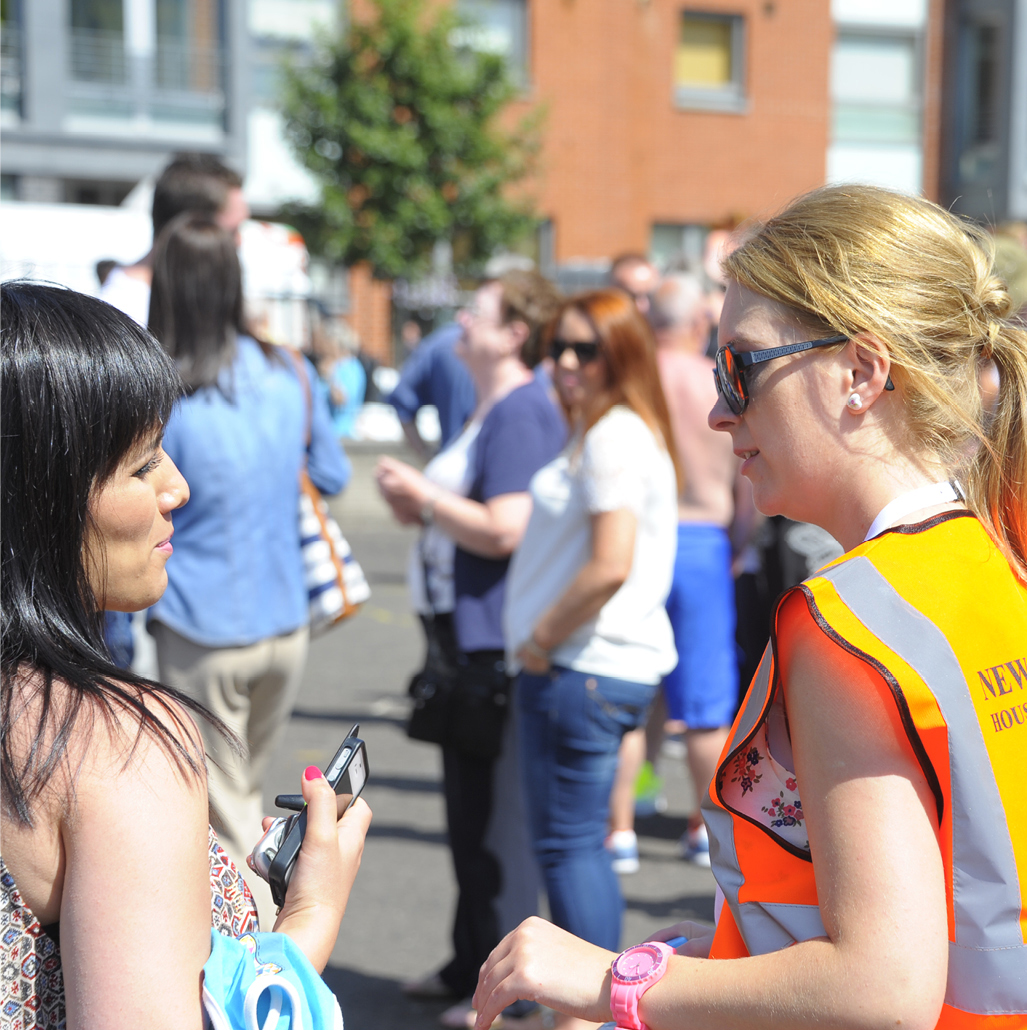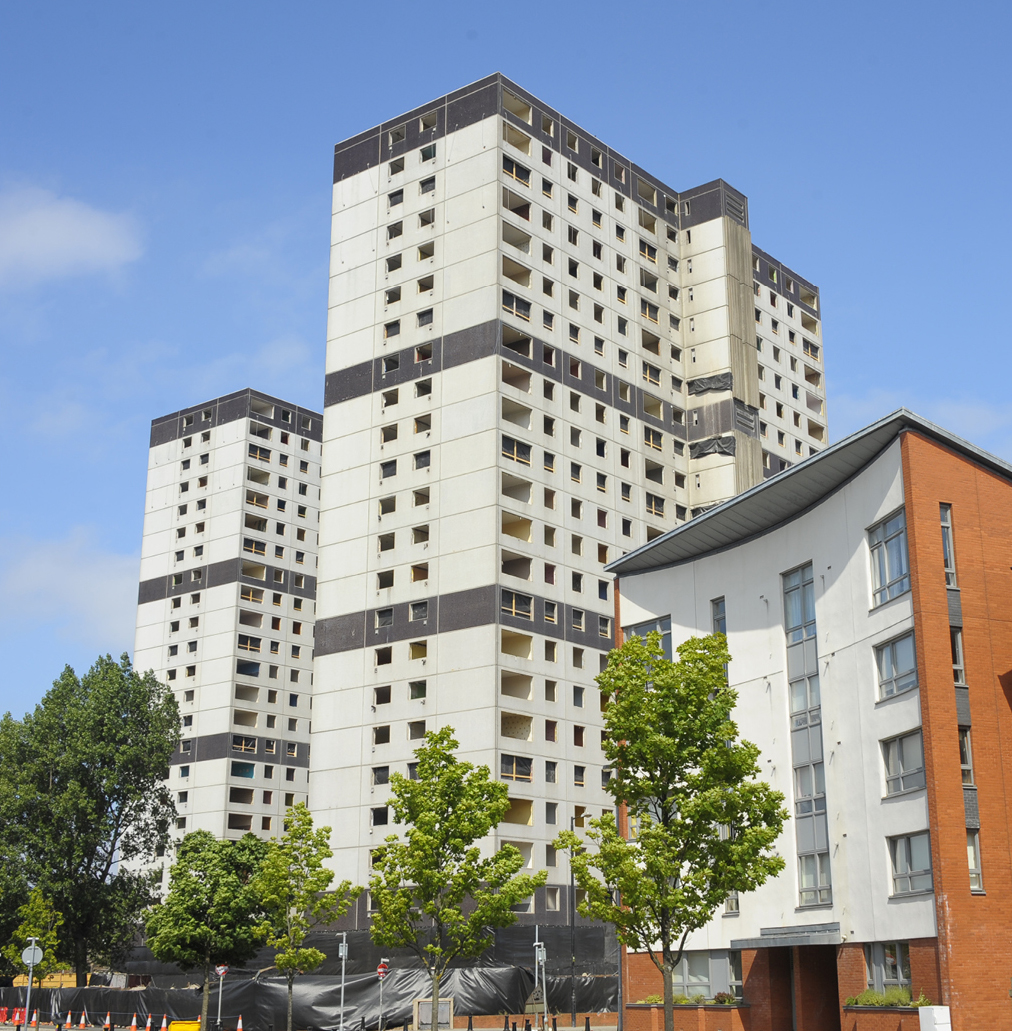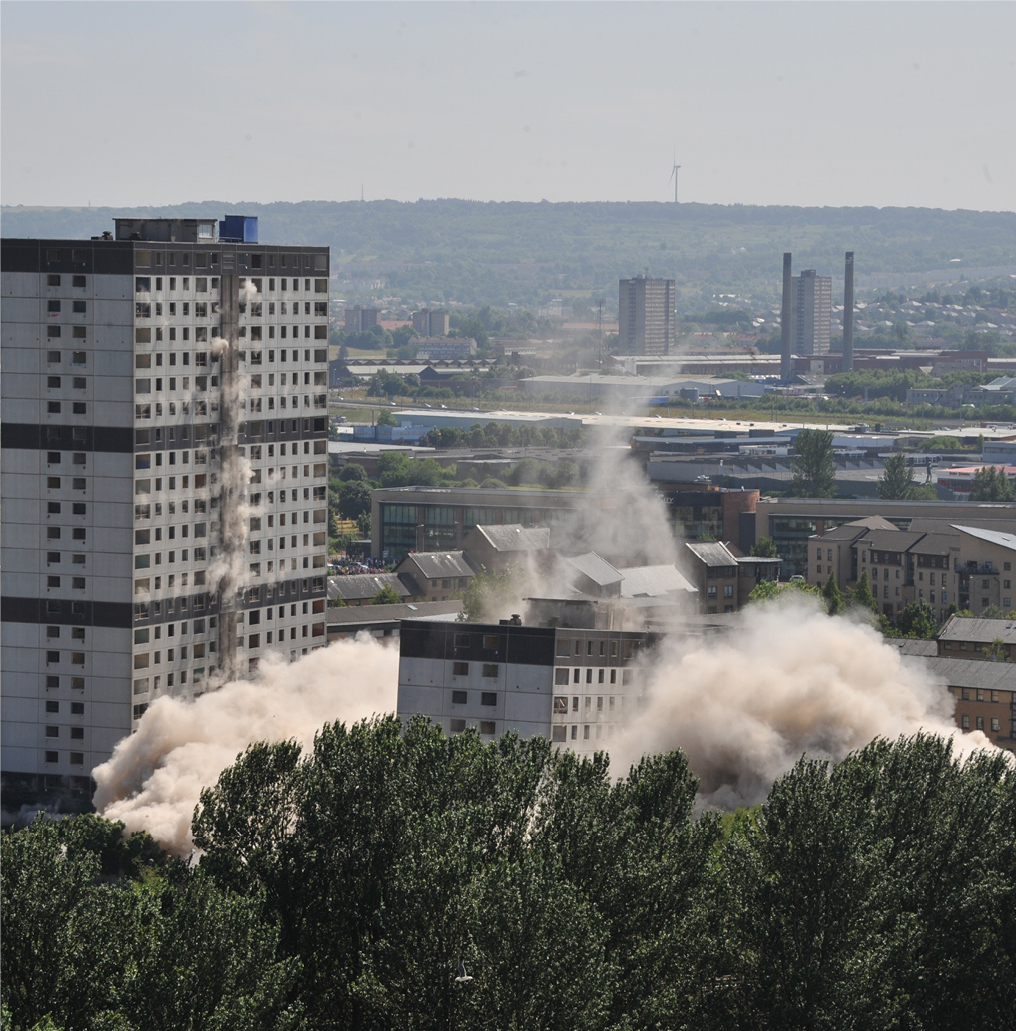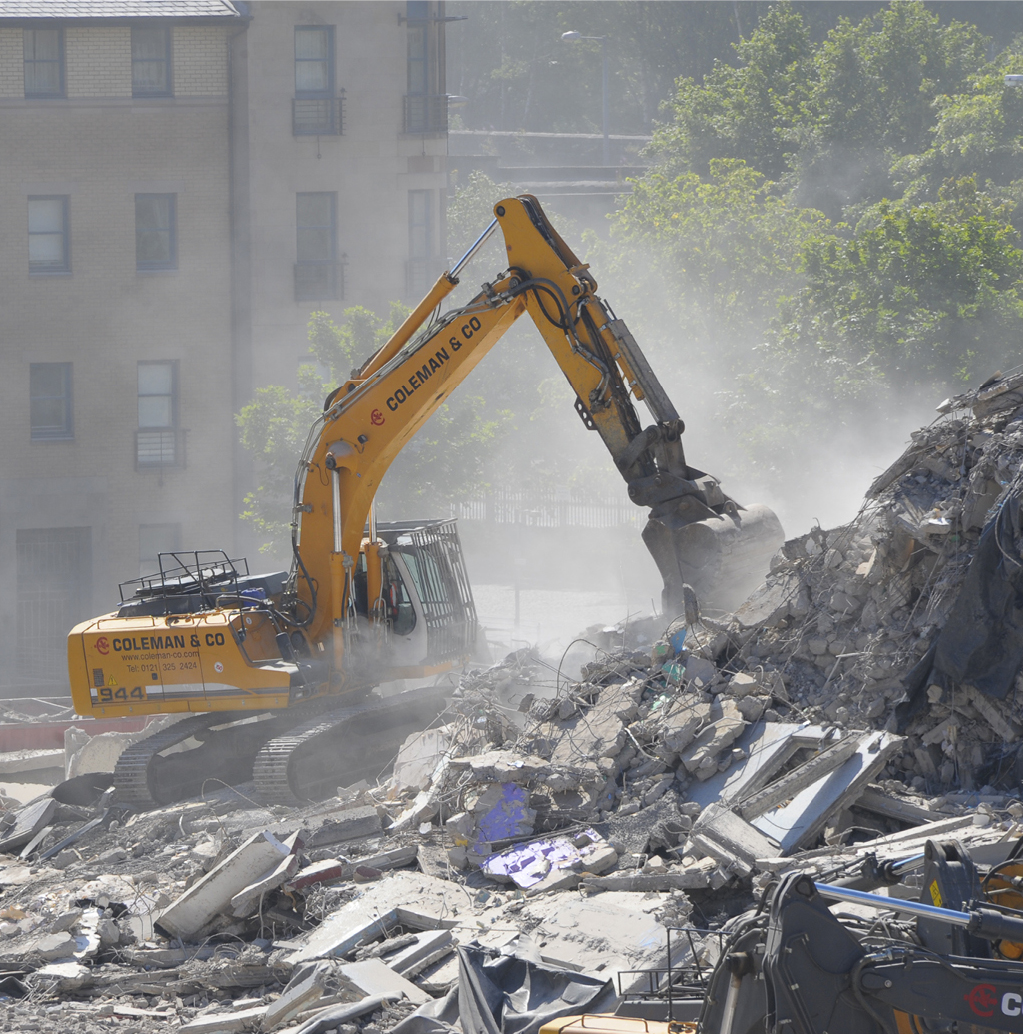Showcasing explosive demolition capabilities in Glasgow
Explosive demolition projects inevitably take months of detailed and meticulous planning, stakeholder engagement and logistical coordination to ensure a successful blowdown.
Colemans were tasked with the demolition of two 1970s residential tower blocks in the Gorbals area of Glasgow. Our team commenced a project spanning 50 weeks in total, from initial planning and design through to removal of foundations and final site clearance, paving the way for a range of redevelopment projects.
As is often expected in urban demolition projects of this kind, Colemans had to overcome a number of site constraints in order to deliver a safe project.
Each 24-storey tower stood 69 metres tall and contained 394 individual flats, located close to a main arterial road and elevated railway line, as well as commercial premises, roads and a new four-storey housing development.
Two 11kV cables and two 132kV cables ran directly through the middle of the site and between the two blocks set for demolition. A road serving the tower blocks was also located just two metres from one of the structures and this needed to be maintained.
Using the combined experience of our demolition and specialist cutting teams, Colemans designed a method of works that took all of this into consideration.
The blast design comprised seven main blast floors and three secondary blast floors in each block. With support from Colemans’ specialist cutting operatives, blast floors were pre-weakened in advance of drilling, ensuring an even and well-prepared surface in which to drill holes.
Charges were placed and stemmed into place, with four delays over one second throughout each block and a two second delay between blocks. In total, 229kg of explosives were used.
The safe delivery of any explosive demolition project is a significant achievement, but Sandiefield Road was made more challenging by site constraints and the strong feelings of the local community towards the landmark structures.
Given its densely populated urban location close to the city centre, comprehensive stakeholder engagement was absolutely key to the success of the project.
A detailed programme of meetings with the police, local authorities and around 1,000 local residents took time and effort. It was important to alleviate any concerns that various people had and our programme of engagement ensured that everyone was happy with the process. We successfully delivered the project thanks to a multi-discipline approach, bringing together the combined experience of the Colemans team and various external authorities.
Notably, both tower blocks were large panel construction, requiring the experience of Colemans’ internal engineers to manage and coordinate various protection measures on site. This would minimise the spread of debris and prevent sliding of the panels as the blocks collapsed.
Such measures included securing the external panels on the top four floors with wire rope and installing impact protection to the high voltage cables running through the site and to the adopted roads within the influence of the blast. Filled containers were strategically placed to contain the debris pile.
In total, 687 people from 355 properties inside the exclusion zone were evacuated by Colemans’ Liaison Team to a rest centre where food, entertainment and refreshments were supplied.
The exclusion zone was secured, enforced and maintained by a team of sentries, co-ordinated by our experienced Sentry Managers as well as a full contingent from Strathclyde Police. A police search team of 21 officers declared the area safe ahead of the blowdown countdown.
Traffic calming measures were also critical to the safe delivery of this project. Colemans worked closely with Police Scotland and the Highways Agency to implement measures on the nearby M74 and M8. Collaboration with Network Rail and British Transport Police ensured protection measures and security of the elevated rail track.

